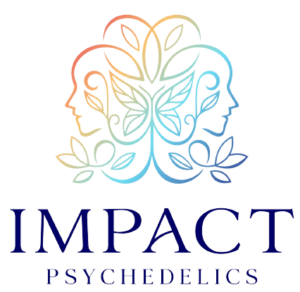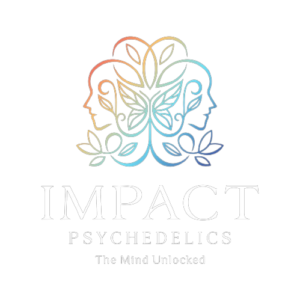
Navigating the World of Esketamine and Ketamine: A Beginner’s Guide
Navigating the world of Esketamine and Ketamine for mental health can be like getting lost in a dark, winding forest. You know that somewhere out there is the right medication with the potential to help you achieve normalcy, but it’s hard to know which way to go or what direction will get you there.
Esketamine and Ketamine are two powerful drugs that have been used for many years to treat mental health disorders. But what is the difference between Esketamine and Ketamine? What research is being done on these medications, and what does the future of Esketamine and Ketamine treatments look like?
In this post, we delve into Esketamine vs Ketamine and how they can help you manage any mental health conditions.
Esketamine Vs Ketamine: What Are They?
Ketamine’s history is a long one. It was first synthesized in 1960 and has since been used as an anesthetic and analgesic drug. During this era, it was mostly used on soldiers during the Vietnam War and found its way into recreational use in the late 1990s. It also became the veterinarian drug of choice for veterinary anesthesia.
Esketamine, on the other hand, was developed slightly later and is the S form of Ketamine. Many may find the two drugs to be interchangeable, as Esketamine is considered a close relative of Ketamine. While both drugs have an effect on treating mental health disorders, such as obsessive-compulsive disorder, anxiety, chronic pain, and depression, there are quite a few differences between the two.
The Differences Between Esketamine And Ketamine
When it comes to Esketamine vs. Ketamine, there are a few key differences to take note of.
Their Molecular Makeup
Esketamine is the S enantiomer of Ketamine, which means that Esketamine is the active ingredient in Ketamine. Esketamine (Spravato) has a lower bioavailability (54%) than intravenous Ketamine(100%), which means that Esketamine is less effective than intravenous Ketamine.
The Way They’re Administered
Esketamine is typically administered as a nasal spray and has been approved by the Food and Drug Administration (FDA) for use in adults with treatment-resistant depression. Ketamine, on the other hand, is most commonly administered intravenously or intramuscularly.
Their Side Effects
Esketamine and Ketamine both have similar side effects such as confusion, disorientation, and drowsiness. Esketamine usually produces fewer and milder side effects than Ketamine. However, Esketamine is less likely to cause respiratory depression and has fewer cardiovascular effects, making Esketamine a safer option for those with heart issues.
Patient Experience
Compared to IV and IM treatments, Esketamine offers a much more comfortable and convenient experience for patients. IV Ketamine has to be administered three times a week which is burdensome for some, while Esketamine only requires outpatient administration that lasts a few minutes.
Medical Use Of Esketamine And Ketamine
When it comes to depression, Esketamine and Ketamine should not be the first line of treatment. Rather, if you fail at least two antidepressant treatments, Esketamine or Ketamine could be a valid option as they are effective for treating treatment-resistant depression (TRD). It is also effective against major depressive disorder with acute suicidal ideation or behavior.
The Mechanism of Action (MOA) of both Esketamine and Ketamine is the blockage of NMDA receptors, making them both CNS depressants. This also results in more serotonin, dopamine, and norepinephrine found circulating in the brain.
Legal and Regulatory Status
Esketamine (Spravato) was approved by the FDA in 2019 for the treatment of depression, and it is only available by prescription. Esketamine can be administered at certified medical centers or clinics where a healthcare professional can monitor and supervise the patient. Esketamine is a schedule 3 drug in the USA. Ketamine is also classified as a schedule III drug and is only available with written prescriptions from doctors.
Current Research and Future Developments
Esketamine is proven to be effective for treating MDD and TRD. In fact, it was shown that patients had a rapid and robust reduction of major depressive symptoms compared to the placebo group. Similarly, besides Lithium, Esketamine is the only additional drug that is proven to be effective in major depressive disorders with suicidal ideation.
Ketamine is an effective treatment for depression and has been used off-label to treat mood and anxiety disorders, PTSD, OCD, and chronic pain. Countless clinical research has shown that Ketamine is effective in treating a wide range of mental health conditions such as anxiety and depression. Recent studies show that Ketamine is effective in treating symptoms of depression with anxiety after 2 weeks and 1 month of the last dose of ketamine, it is promising for long-term use.
A True Breakthrough In Mental Health
Esketamine and Ketamine are two promising drugs for treating mental health disorders. Both drugs have proven to be effective in treating a wide range of mental health issues, from depression to anxiety.
Here at Impact Psychedelics, we believe Ketamine offers an opportunity for those who have failed other treatments for MDD or also suffer from other mental illnesses. It is a true breakthrough for mental health and we strive to provide you with effective psychedelic treatment options to help you manage your mental health condition.
Learn more about how we can help you find a treatment plan that works for you.

